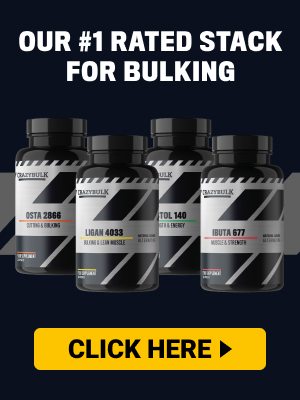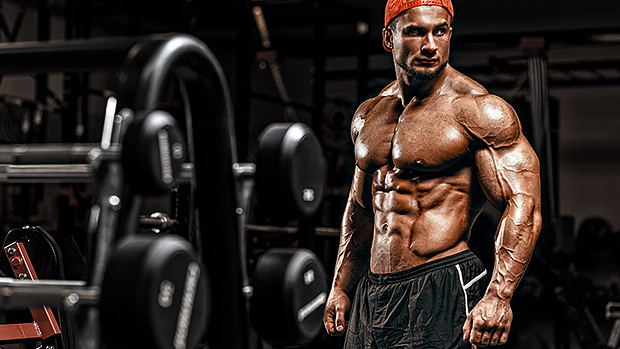Beginner Full-Body Workout Plan You Can Start Today
Introduction: Why Full-Body Training Is the Smartest Start
Every lifter starts somewhere. Some walk into the gym with a bodybuilding magazine routine and hammer out 20 sets of chest on day one. Others copy what their buddy is doing and burn out within weeks.
Here’s the truth: the fastest way to build a strong, muscular foundation as a beginner is with full-body training.
Why? Because full-body workouts let you:
- Practice the most important lifts more frequently.
- Build strength evenly across your body (no chicken legs).
- Grow muscle without living in the gym six days a week.
As someone who’s been lifting for years and has coached countless beginners, I can tell you this: starting with a well-structured full-body workout plan will accelerate your results and set you up for long-term success.
Let’s break down everything you need to know — the science, the strategy, and a plan you can start today.
Why Full-Body Training Works So Well for Beginners
- Frequency Builds Skill and Strength
Strength is a skill. The more often you practice the squat, bench, and deadlift, the faster your nervous system adapts and the better your form becomes. A split routine might have you squatting once a week, but a full-body routine lets you hit it two or three times per week — and that means faster progress.
- Balanced Development Prevents Weaknesses
One of the biggest mistakes new lifters make is chasing mirror muscles — chest and arms — while ignoring their back and legs. A full-body routine removes that temptation because everything gets trained every week.
- Efficient Use of Gym Time
Most beginners don’t need six workouts a week. Three focused full-body sessions deliver more than enough stimulus to grow, while leaving room for recovery. Remember: muscle isn’t built in the gym, it’s built while you rest.
- Simple, Sustainable Structure
When you’re new, complexity kills consistency. Full-body training strips things down to the essentials: master the big lifts, add a little accessory work, and repeat.
The Core Principles of This Plan
Before we dive into sets and reps, understand these four principles that make any full-body workout plan successful:
- Progressive Overload: Your body adapts when you gradually demand more from it. This means adding weight, adding reps, or improving form over time.
- Compound First: Start each workout with big, compound lifts (squat, deadlift, bench, row, overhead press). They train multiple muscle groups at once and give you the most bang for your buck.
- Moderate Volume, High Frequency: Beginners grow best when training each muscle group multiple times per week with a manageable number of sets.
- Recovery is Non-Negotiable: Sleep, nutrition, and rest days matter as much as training. Overdoing it only leads to stalled progress or injury.
The Beginner Full-Body Workout Plan
This plan alternates between Workout A and Workout B, performed three times per week on non-consecutive days (e.g., Monday, Wednesday, Friday).
Workout A
- Back Squat – 3×8
- Bench Press – 3×8
- Barbell Row – 3×8
- Dumbbell Overhead Press – 2×10–12
- Plank – 3×45–60 seconds
Workout B
- Deadlift – 3×5
- Overhead Press (Barbell) – 3×8
- Pull-Ups or Lat Pulldown – 3×8–10
- Dumbbell Incline Press – 2×10–12
- Side Plank – 3×30–45 seconds per side
Weekly Layout Example:
- Monday: Workout A
- Wednesday: Workout B
- Friday: Workout A
- Next week → Start with Workout B
This rotation gives you three full-body sessions per week, with slightly different emphases to keep progress balanced and engaging.
Exercise Breakdown and Coaching Cues
Squat
- The foundation of lower body strength.
- Keep chest up, core braced, and push your knees out.
- Progress slowly — perfect form first, weight second.
Deadlift
- Trains posterior chain (glutes, hamstrings, back).
- Hinge at the hips, don’t squat the bar up.
- Neutral spine, bar close to shins, drive through heels.
Bench Press
- Targets chest, shoulders, triceps.
- Retract shoulder blades, plant feet firmly.
- Touch chest lightly, press explosively.
Overhead Press
- Builds shoulders and triceps.
- Squeeze glutes, brace abs, press in a straight line overhead.
Rows and Pull-Ups
- Essential for back thickness and strength.
- Keep movements strict; don’t jerk the weight.
Core Work (Plank Variations)
- Strengthens trunk stability, carries over to every lift.
- Focus on quality holds, not just time.
Sets, Reps, and Rest Guidelines
- Big Lifts (Squat, Deadlift, Bench, Overhead Press, Row, Pull-Ups):
- 3 working sets per exercise.
- Reps: 8–10 for hypertrophy, 5 for deadlifts (better for strength and safety).
- Rest: 90–120 seconds between sets.
- Accessory Lifts (Dumbbell Press, Core):
- 2–3 sets of 10–12 reps (or 30–60s holds for planks).
- Rest: 60–90 seconds.
How to Progress
The beauty of this plan is that progression is straightforward.
- Linear Progression:
- Add 2.5–5 lbs (1–2.5 kg) per workout on upper body lifts.
- Add 5–10 lbs (2.5–5 kg) per workout on lower body lifts.
- Form Check Rule:
- Only add weight if your form was solid on all reps.
- If form breaks, repeat the weight next session.
- Rep Goals:
- If you hit the top of your rep range (e.g., 10 reps at 3×10) with good form, add weight next time.
This simple progression method can keep a beginner progressing for 6–12 months straight.
Practical Training Strategies
- Use Warm-Up Sets Wisely: Don’t jump straight to working weight. Ramp up gradually with 2–3 lighter sets.
- Track Your Training: Write down weights, sets, and reps. Small improvements add up fast.
- Prioritize Recovery: If you’re constantly sore or exhausted, cut back volume slightly or take an extra rest day.
- Don’t Chase Failure Every Set: Leave 1–2 reps in the tank. This keeps recovery manageable and technique sharp.
Nutrition and Recovery for Muscle Growth
Training is only half the battle. To build muscle, you need to fuel your body properly:
- Protein: Aim for 1.6–2.2 g of protein per kg of bodyweight daily.
- Calories: Eat in a slight surplus (+200–300 kcal above maintenance) if muscle gain is your goal.
- Hydration: At least 2–3 liters of water daily.
- Sleep: 7–9 hours per night. Growth happens when you rest.
Who Is This Plan For?
- Absolute beginners (0–12 months of lifting experience).
- Busy lifters who can only train 2–3 times per week.
- Anyone returning after a layoff who needs to rebuild strength safely.
When to Move Beyond This Plan
You’ll know it’s time to advance when:
- Progress stalls for several weeks even with proper nutrition and recovery.
- You’ve mastered technique and want more variety.
- You’re ready to train 4–6 days per week and focus on specific muscle groups.
At that point, moving into an Upper/Lower split or Push/Pull/Legs routine is the natural next step.
FAQs: Beginner Full-Body Workouts
Q: Can I add arm or ab exercises?
Yes — 1–2 small accessory moves at the end won’t hurt. Just don’t replace the main lifts.
Q: Is this plan good for fat loss?
Yes. Combine it with a calorie deficit and you’ll lose fat while maintaining or even building muscle.
Q: Should I use machines instead of free weights?
Free weights build more balance and coordination, but machines are fine if you’re limited or easing into lifting.
Final Takeaway
If you want to build muscle, strength, and confidence in the gym, start with a beginner full-body workout plan. It’s simple, efficient, and battle-tested by generations of lifters.
With just three workouts per week, you’ll master the big lifts, add muscle across your entire body, and set the stage for more advanced programs down the road.
👉 Ready for the next step? Check out my guide to the Push Pull Legs Routine — Beginner to Advanced.






